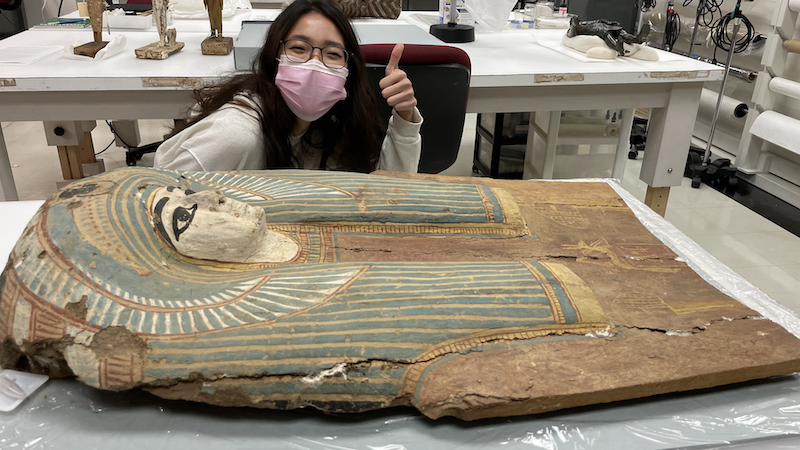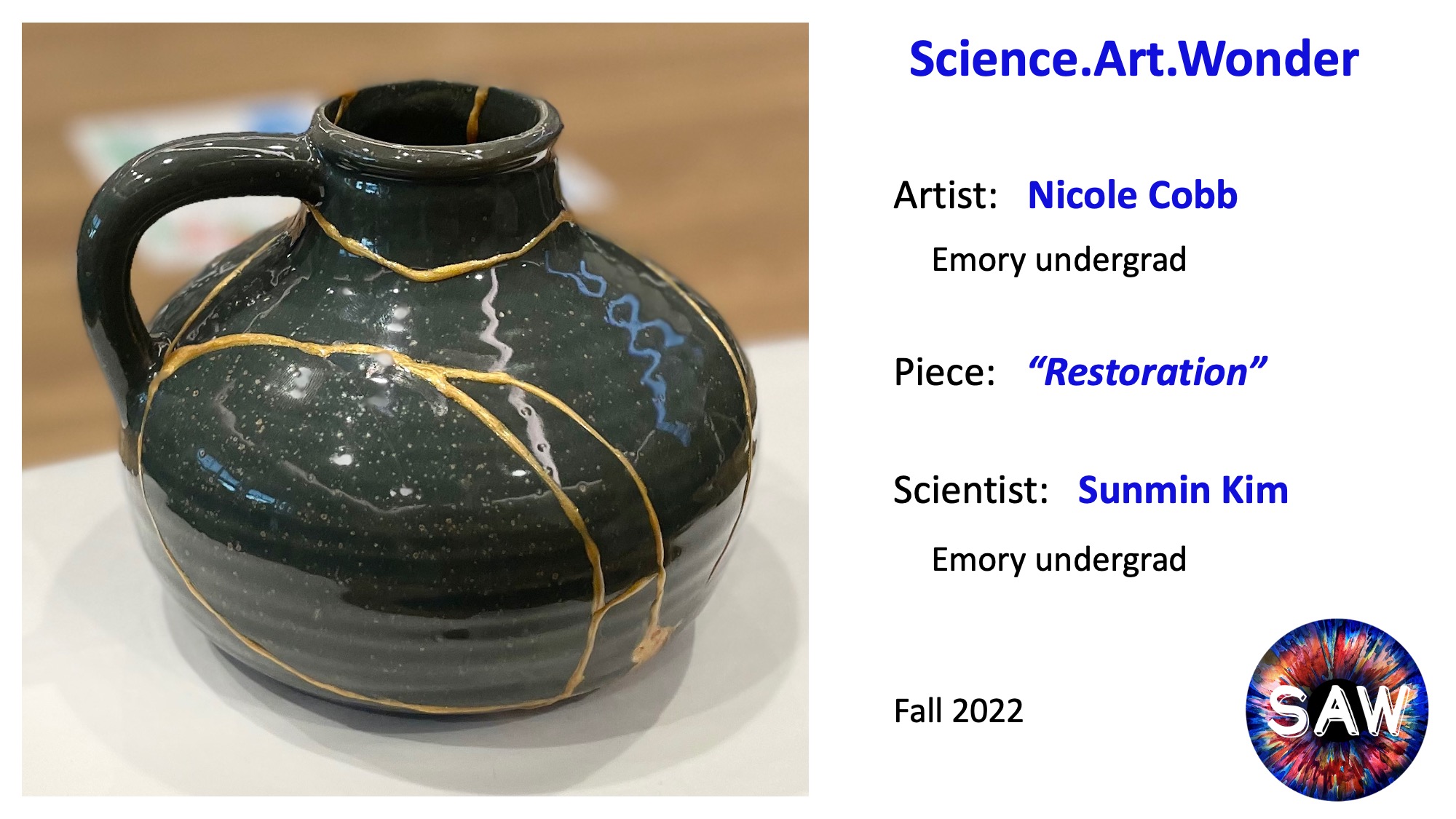The field of art conservation routinely uses polymer resins to repair and protect artworks that have been damaged. The requirements for these polymer materials must meet various demands, the most important being that the resins can be removed or retreated without harming the original artwork, which may be thousands of years old. The adhesive must also be stable for decades and ideally be nearly invisible by matching the refractive index of the repair to the material of the artwork. In addition, although the repaired bonds must be strong, they should not be too strong such that any future fracture occurs in the bond at the existing fault lines and not a new locations in the art.
For historical reasons the field of conservation has long used a series of different acrylic resins originally developed by Rohm & Haas. Although there is great interest within the field about the properties and best uses of these materials, there is limited funding available for direct fundamental research on these resins.
In collaboration with Chief Conservator Renée Stein at Emory’s Carlos Museum, the Roth lab is conducting research projects with undergraduate students to characterize these polymers used in the preservation and restoration of artworks.
As polymer properties are highly dependent on how they are prepared, we are hoping to provide some scientific insight into the various preparation steps commonly used in the field in an effort to understand which steps are important and why/how a given resin may function better in a given environment.
Sunmin Kim at the Carlos Museum Conservation Lab next to an ancient Egyptian coffin lid dating back to the 22nd Dynasty (900-700 BC). Repair locations in white are visible, corresponding to B-72 bulked with glass miscrospheres that was injected into the cracks and around fragments as part of a triage treatment to stabilize the piece for transport to Atlanta.

Honors theses research by Benjamin Kasavan and Olivia Boyd have characterized the glass transition, refractive index, and fracture stress of various resins and blends. Sunmin Kim is currently continuing these efforts.
Science.Art.Wonder, an Atlanta-based organization, pairs artists and scientists to design artwork that can communicate scientific research to the public.

Artist’s narrative by Nicole Cobb:
“Restoration” is a ceramic piece done in the style of Japanese kintsugi: the art of repairing broken pottery with gold. The gold holding the cracks in the piece together represents the various different polymer-based adhesives created for art restoration at the Carlos Museum. These adhesives are formed by dissolving Paraloid B-72 and B-48N acrylic pellets in acetone and must meet a Goldilocks standard. The adhesive strength should not be too weak such as to fail in holding the restored art together nor too strong such as to damage the restored art. Although these adhesives are typically imperceivable in restored artworks, they are represented in gold in this piece to highlight the importance in studying their material properties. This piece incorporates Kintsugi philosophy, which is about embracing flaws and reminds us that there is still utility and beauty to be found in broken things.
Scientific abstract by Sunmin Kim:
Since conservator Stephen Koob’s 1986 publication, the acrylic polymer Paraloid B-72 has been widely used as a reliably stable and reversible adhesive for restoration in the art conservation field. In recent years, conservators have begun to incorporate the less commonly used and stiffer polymer Paraloid B-48N into blends with B-72. Applied as a solution in acetone, these adhesives solidify due to their underlying polymers’ glass transition occurring by the evaporation of solvent over time. As these blended adhesives are applied to historically significant and irreplaceable artifacts, we must measure and record the strength of the adhesives prior to their incorporation. In our project, glass rods are broken and repaired with adhesives created out of varying B-72:B-48N ratios. The adhesives are evaluated for their tensile fracture strengths utilizing the Conservation Adhesive Tensile-to-Shear (CATS) Tester and additionally examined for their glass transitions using an optical instrument known as an ellipsometer.
